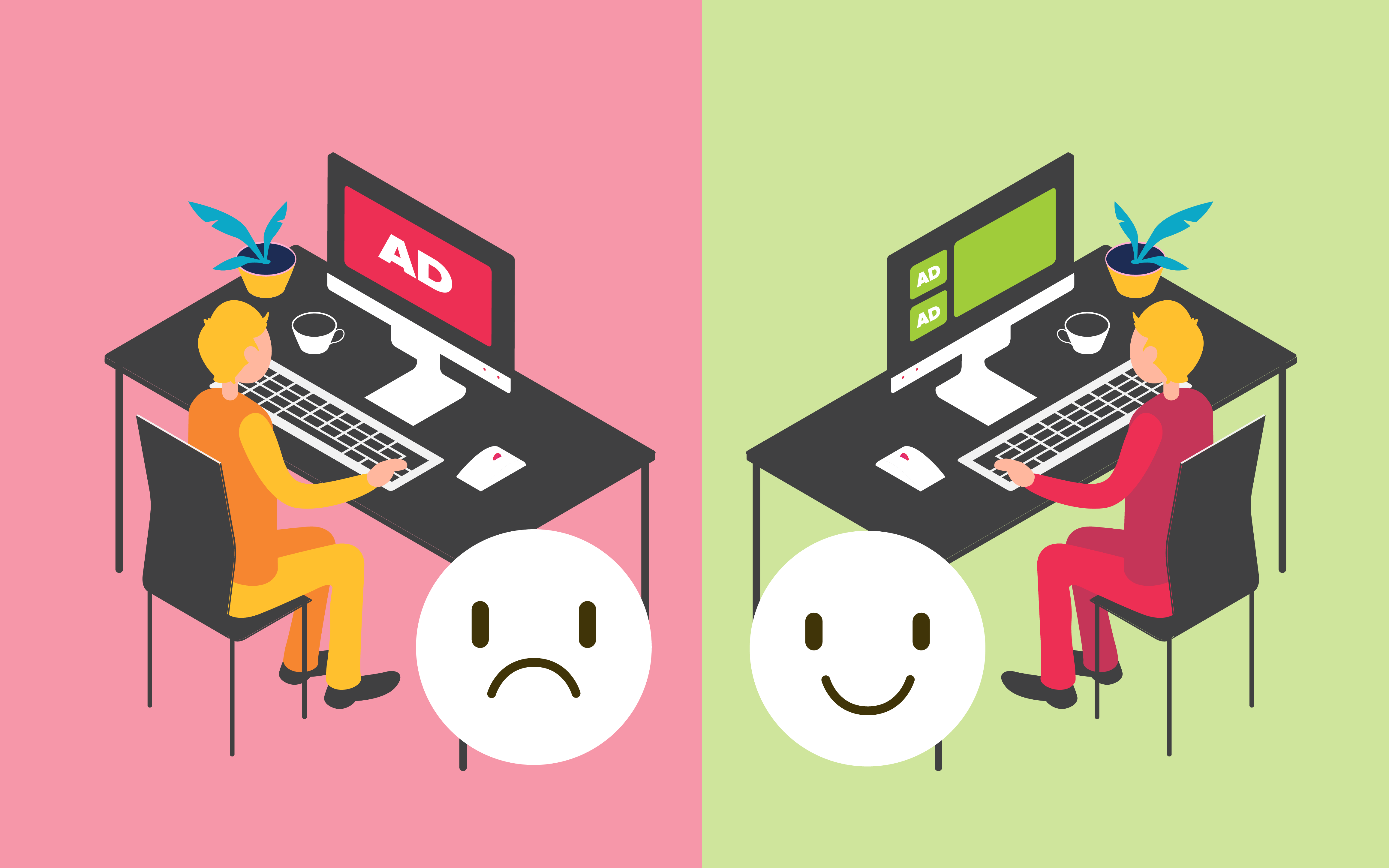How did Adwords change bidding at the end of 2023? (performance analysis)
What is AdWords? Google AdWords, now known as Google Ads, is an online advertising platform by Google. It allows businesses…

In addition to the layout on a website, an ad structure can be optimized through the sizes and types of the served designs. There are standards and rules that will direct you towards the best solutions, but sometimes it’s good to look into the aspect of regionalism too. Also, the question arises: are all sizes and types of ads received equally well by users?
When talking about standards on the Internet market, it’s impossible not to mention the IAB (Interactive Advertising Bureau), which is an organization that brings together entities of the interactive market. It includes over 650 of the largest media and technology companies that deal in the broadly-defined Internet marketing.
One of the IAB’s objectives is to create quality standards that affect many aspects of online advertising, such as SEO and behavioral ads. As far as the display is concerned, it is worth reading this article, it will give you recommendations and tips on advertisements from a wide range of environments such as websites, applications, and social media. The latter environment offers a lot of new technologies collectively referred to as New Media.
Modern forms of advertising include virtual and augmented reality, as well as emoji ads (customized emoticons) and 360o photos. From our point of view, in the case of typical websites, display ads are the most important. The IAB has created a standardized list of sizes and rules for designs, which are supposed to provide the best possible UX.
Before proceeding to the main topic, it is important to analyze how users react to ads. Based on the article “The most hated online advertising techniques” by Nielsen Norman Group and the survey they conducted, we can distinguish groups of those better or worse received. The answer can sometimes be surprising.

This graph should be interpreted as follows: it uses a scale of 1–7, where 1 means a positive impression, and 7 – a negative one.
[mc4wp_form id=”407″]
By subscribing to the newsletter, you agree to receive commercial information about Yieldbird’s services. The controller of the personal data provided is Yieldbird with its registered office at ul. Czerska 8/10, Warsaw. The controller processes the personal data to send you marketing content regarding its services and news about programmatic advertising. You can read more about the processing of personal data in our privacy policy and transparency policy.
As you can see, when it comes to desktop ads, the most hated ones include modal ads, autoplay video ads, ads that reorganize the content of the page after being loaded, and links that seem to be part of the content but, in reality, are ads. Modal ads can be understood as pop-up ads that obscure the content of the page until they are closed by the user.

A graph from the same article, but for mobile devices. Modal and intracontent ads rank high on both lists.
In the mobile environment, all ads are received rather negatively, with the exception of recommended links. Surprisingly, “persistent banner, bottom”, i.e. a banner stuck to the bottom edge of the screen, is received better than a banner along the top edge. Practically all of the types have been rated more severely than those on desktop computers.
We may now return to the original topic – let’s take a closer look at the most popular formats from the GAM network.
There is a great variety of ad sizes for desktop, which allows a good fit for almost every layout. When choosing from among them, you must consider their popularity in your network. Looking at the figure below, you can see the percentage shares of individual sizes among all the views.

This figure from match2one.com shows what sizes appeared most frequently in the network that they examined. Using only these five sizes, you would be able to cover 83% of the inventory.
We can say – without any doubt – that rectangle 300×250 has a clear advantage over the rest, accounting for nearly half of all the views. Its important feature is its versatility – it can be used not only on a desktop computer but also on mobile devices and applications.
To the above list, we could add the 336×280 size that was distinguished in Google’s Guide to ad sizes. It’s called a large rectangle and fits both desktop and mobile environments.
Summing up, when choosing sizes of designs for the desktop, try to use as many sizes as possible:
Designing the ad structure for mobile devices is more difficult because the visible part of the screen is much smaller. This forces you to manage space wisely in order to maintain the status quo between UX and revenues from ads. The previous part of the article described how a study carried out by Pandora Music showed a direct relationship between the number of ads and the decrease in the amount of music listened to on the site. However, this is not the only limitation, because Better Ads Standards allow ads to make up only 30% of the web page’s content.


Just like for desktop, the most frequently displayed sizes of designs can be distinguished. The original figure is available at match2one.com.
What’s a bit different from the desktop environment is that mobile sizes have greater granularity. Only the 320×50 size constitutes a major part of the network inventory considered by the website – the other sizes have relatively small shares. However, it should be remembered that 300×250 and 336×280 can be considered as mobile too.
So, how to wisely manage the small space that you have? The list of disliked advertising formats may serve as a hint. For example, when choosing an anchor ad, it’s better to place it at the bottom of the screen. Intracontent ads have been rated quite severely, but it would be hard to completely give them up. What can be a bit helpful in this situation is the phenomenon where people rate a website and its functionality better if the layout is pleasing to the eye.
Summing up, in the mobile environment, it’s best to use:
In some countries, there are additional, customized sizes. In the Polish GAM network, you’ll additionally come across 750×300, 750×200, and 750×100, which are not available anywhere else. Google also distinguishes the 240×400 size as the most popular in Russia, 980×120 and 250×360 in Sweden, 930×180 in Denmark, and 580×400 in Norway.
Using the knowledge of online user behavior and the popularity of individual formats, it is possible to create an ad structure that is optimal in terms of generated revenue and UX. You will have to face many rules and tips on dos and don’ts, but, after some time, good practices will become a natural and integral part of designing. If you are unsure about your skills, you can always contact a specialized company such as Yieldbird, which will carry out an audit of your website.

Karol Jurga
Chief Revenue Officer
See it in action.